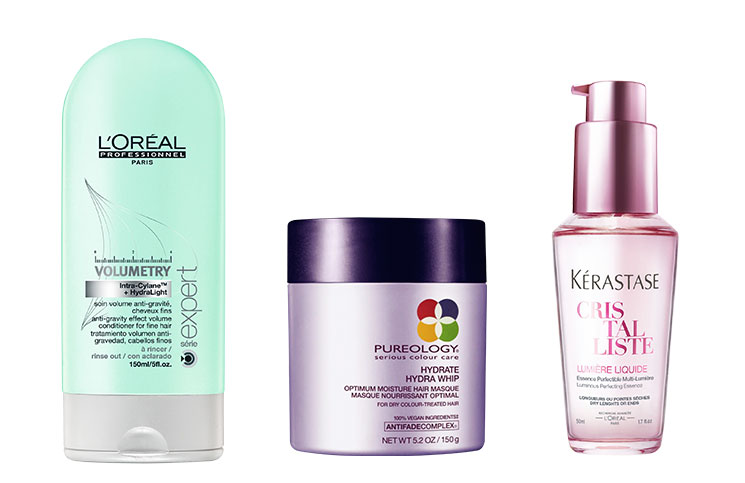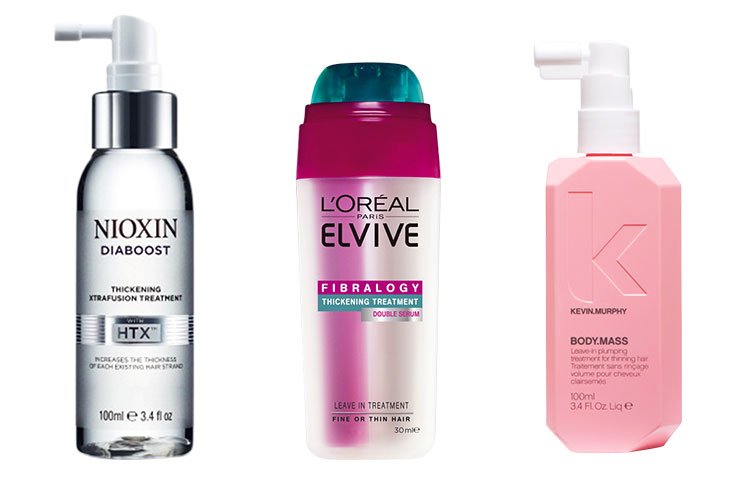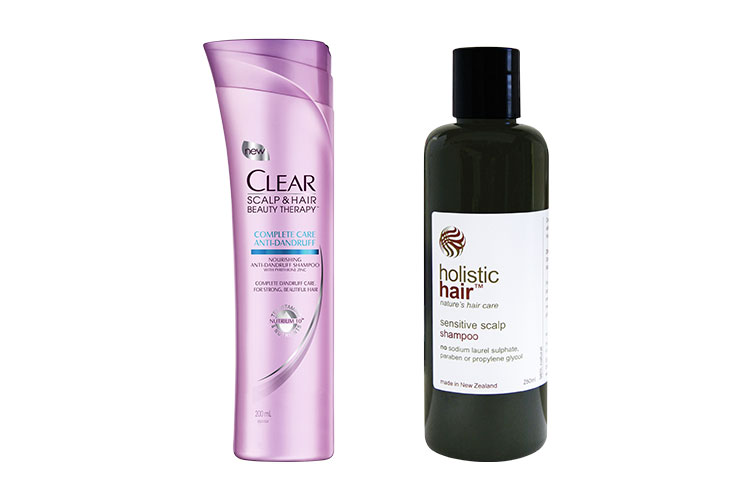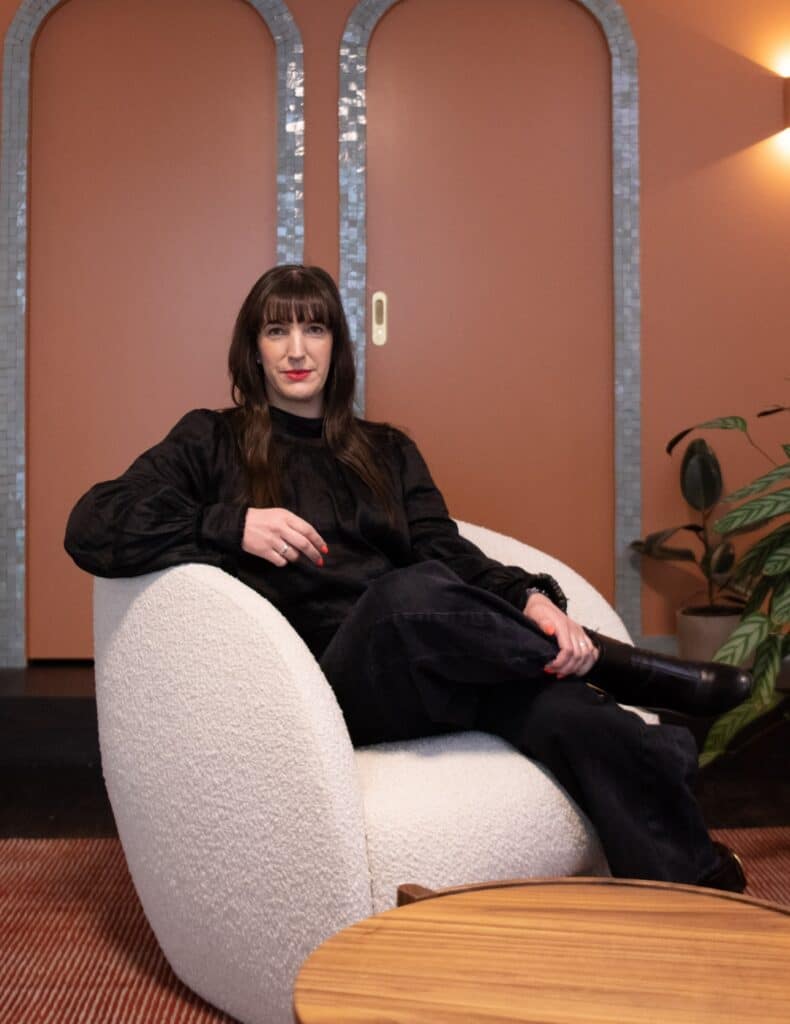
How healthy is your hair?
Bad hair days happen to us all. You wake up and your hair is too flat or has too much volume. Sometimes no matter how many times you run the brush through, it just won’t sit right and you end up frustrated and defeated. It may feel shallow to complain about bad hair days, but hair does seem to have Samson-esque qualities. In fact, hair is a big indicator of your wellbeing. In the same way our skin shows what’s going on internally, the condition of our hair also reveals a lot about our health. Seemingly insignificant changes in hair or scalp are our body’s way of telling us there is something wrong. The following tests will help you pinpoint common problems, what they say about your health and your hair, and how to fix them.

Thirsty hair exam
The test: Pull at a strand of wet hair; if it snaps it’s dehydrated.
What it reveals: If your skin is also dry your entire body could be in need of more water so increase your intake to the recommended 1.6 litres, or roughly eight glasses a day. Parched hair is a likely clue your diet has low levels of omega-3, a vital nutrient that nourishes hair at the roots as well as protecting against heart disease, cancer and ageing.
The solution: With 90% of the population falling short of the optimum levels of omega-3, we could benefit from daily supplements or eating a serving of oily fish (sardines, tuna or salmon) twice a week. Plus, women spend 50% less on conditioning products than shampoo but it really is vital to keep hair moisturised. Try L’Oréal Professionnel Série Expert Volumetry conditioner, $28.50, a nourishing mask like Pureology Hydrate Hydra Whip Masque, $52 or Kérastase Cristalliste Lumière Liquide, $40. Trust us – you’ll notice the change.

Splits check
The test: Grab a large section of hair and twist it tightly down the lengths into a rope shape. Split ends will splinter out the sides.
What it reveals: Excess split ends could be a sign your diet lacks the essential fatty acids found in nuts and seeds which help bind the ends of hair together. They also help skin cells retain water for optimum hydration.
The Solution: Split ends ravage your locks by tearing up the hair shaft so it’s in your best interest to deal with them as soon as you can.
Fork in the road split end: All split ends begin with a single tear. To temporarily seal it, apply TRESemmé Split Remedy Split End Sealing Serum, $9, to towel-dried hair.
Triple Split End: If your hair has reached this stage it’s time to book in for a trim before the split gets any worse.
Branch Split End: At this stage the split ends are branching up the hair shaft. The only real solution is to have a proper cut to prevent further splitting.

The tug trial
The test: Take a clump of hair just over 2cm in width and gently tug the hairs. If more than six strands come out it could indicate your hair is shedding more than normal.
What it reveals: Hormones could be playing havoc with your health as well as your mane. Hair has a three-year cycle of growth, rest and periods of shedding. The changes in hormone levels that come with stress, illness, pregnancy or post-birth disrupt this cycle, causing the shedding to occur earlier and resulting in thinning hair. But annoyingly, it’s often only apparent two to four months after said event.
The solution: First things first – don’t panic! If the event that caused your hormone surge is over, then your hormones will have already started to balance out so your ‘normal’ hair cycle will have kicked in again. But if hair continues to thin over another three months with no obvious trigger, seek medical advice to rule out a thyroid problem or alopecia. In the meantime try Nioxin Diaboost, $65. The spray-on product has a mixture of ingredients, including caffeine, which will thicken your locks by boosting the diameter of your existing hair. Another option is a plumping line recently released by Kevin Murphy. Inspired by eyelash thickening technology, the three-part line consists of a Plumping wash and a Plumping rinse, $48 each, as well as the key leave-in product, Body Mass, $70. Body Mass encourages growth and thickness while preventing breakages. L’Oréal also has a new range called Elvive Fibrology with a thickening shampoo, $6.50; conditioner, $6.50; and double serum, $11, a thickening gel that delivers intense nourishing of the hair fibre.

The snap test
The test: Pluck a hair from the roots at the top of your head. Give it a gentle tug; if it snaps nearer the root than the tip you’ve identified brittle top layers.
What it reveals: It’s likely you’ve been under a little pressure recently and as a result your body has been producing excess cortisol. The stress hormone could not only be blocking your body’s absorption of nutrients, but can speed up the ageing process and lead to visceral fat around your middle: a predictor of future heart disease in women. It also hinders the absorption of calcium, which is vital in protecting against osteoporosis as well as strengthening the keratin bonds in hair and nails.
The solution: While long-term stress should be tackled with lifestyle changes, vitamin B6 and B12, zinc and magnesium are the anti-stress nutrients that will help to balance hormones. Eat spinach, nuts and brown rice to boost magnesium levels plus dairy to give a hit of zinc. Redken Extreme Anti Snap, $35, is another option. The leave-in treatment uses a complex of protein and ceramide to fortify weakened areas.

The root ruler
The test: Monitor your hair growth: it should grow approx 1.3cm each month. Ask your colourist to leave a 2mm section behind your ear so you can measure growth from the roots. If it’s uncoloured use a longer ruler and measure monthly.
What it reveals: If your hair isn’t growing your iron levels could be low. Nigel Russell, trichologist and director of Holistic Hair, says “If you’re low in iron your body will rob your hair and scalp of it.” Janeen Howard, medical herbalist from supplement brand GO Healthy, says. “I’d recommend iron supplements for overall growth and wellness of hair as it carries oxygen to the roots.” Iron deficiency is common in diets lacking protein; this leaves you lacking in energy – especially around your period when iron levels drop further.
The solution: Eat two servings of red meat twice a week, and more lentils. Another option is to take GO Healthy GO Iron For Women, $20 for 30 capsules. Howard also suggests taking vitamin C with the supplement to boost iron absorption. L’Oréal Paris Elvive Arginine Resist Spray, $8, is good to activate microcirculation around the hair follicle, which provides intense care for fragile hair fibres.

Scalp scan
Test: Part your hair to look at your scalp. It should look smooth but if it doesn’t, see below:
Dry and flaky: One in five of us suffers from a flaky scalp and one reason is because we’re putting in too much product. “People over-layer product – they use gel, mousse and hairspray,” Russell says. If you are layering on too much product every day, he says “you’ve either got the wrong style or the wrong hairdresser!” The perfect PH level for the scalp is slightly acidic at 5.5 – anything above that and it will start to dry out the scalp. Russell recommends using Holistic Hair Sensitive Scalp Shampoo, $25, which uses apple cider vinegar and works to bring the PH level of the scalp back to normal. Dairy and alcohol could also be to blame. The body finds them hard to metabolise, and this then sends the immune system into overdrive, resulting in a flaky scalp. Try eliminating dairy and alcohol for a week. Instead of cow’s milk opt for soy or rice milk.
Flaky and oily: Dandruff is a combination of flakiness and greasy roots. The cause is usually a fungal infection that increases cell turnover, making skin itchy and oilier than normal. Russell says a balanced diet is important for hair health. “The scalp and skin require the right balance of nutrition plus natural healthy fats in order to keep it balanced properly. If the body is deprived of essential fatty acids then the skin begins to dry out and it can become prone to infection.” Dandruff shampoos, especially those containing zinc and selenium, will zap the fungus. Clear Complete Care Anti-Dandruff Shampoo, $6, uses a mixture of vitamins and nutrients to achieve scalp protection. Similarly, Clairol Professional Anti-Dandruff Shampoo, $17, uses zinc mixed with jojoba oil and calendula extract to keep the scalp healthy.
Red and itchy: The culprit is either seborrhoeic eczema triggered by higher than average levels of histamine in the body or an overactive presence of yeast on the scalp. The body produces histamine in reaction to allergens, but alcohol and spicy foods also contain high levels of histamine – the excess histamine may be something your body is particularly sensitive to. Seborrhoeic eczema can’t be cured completely but a trichologist can treat it with a keratolytic ointment containing salicylic acid to cleanse the scalp and remove yeast.










